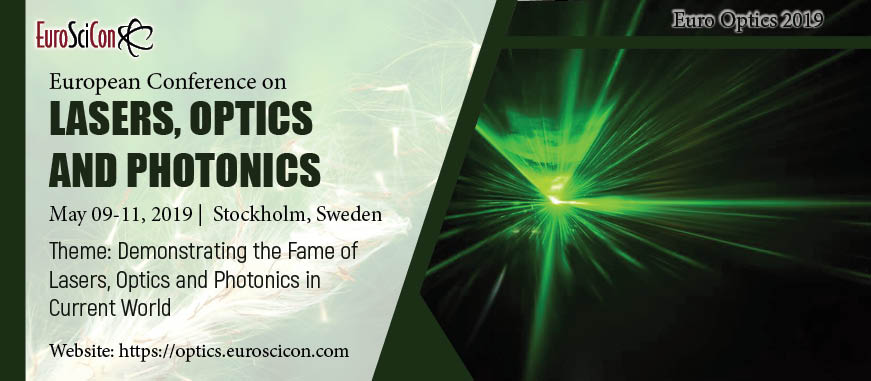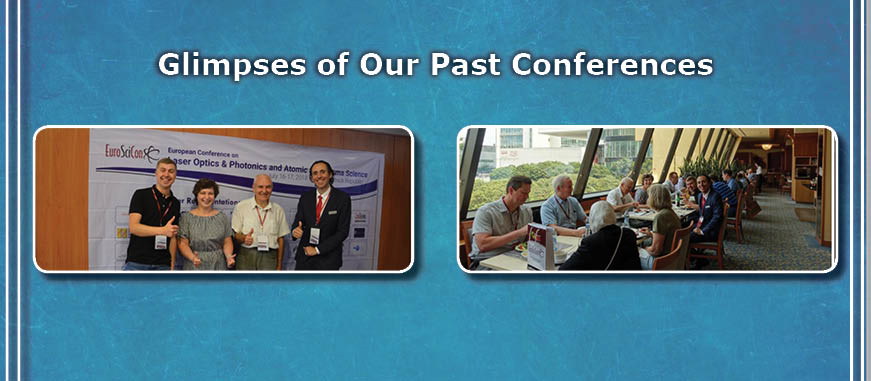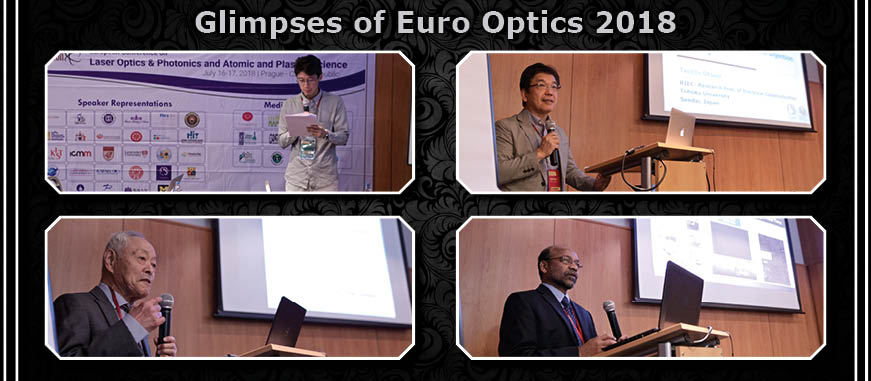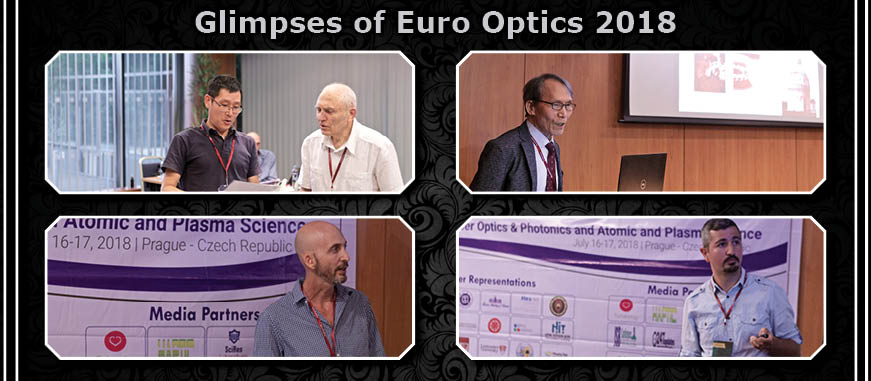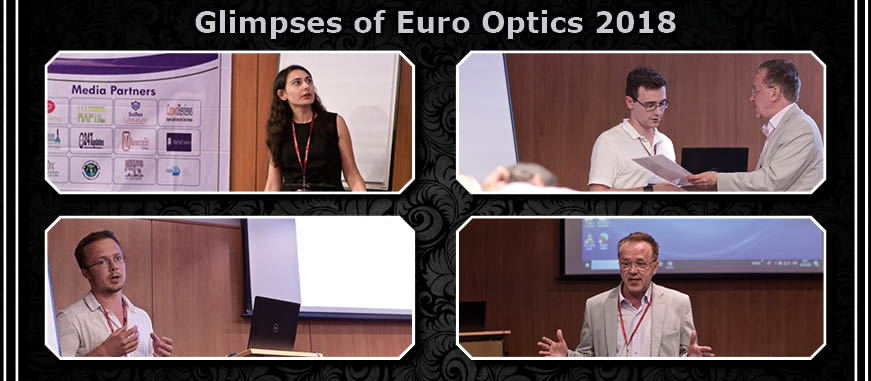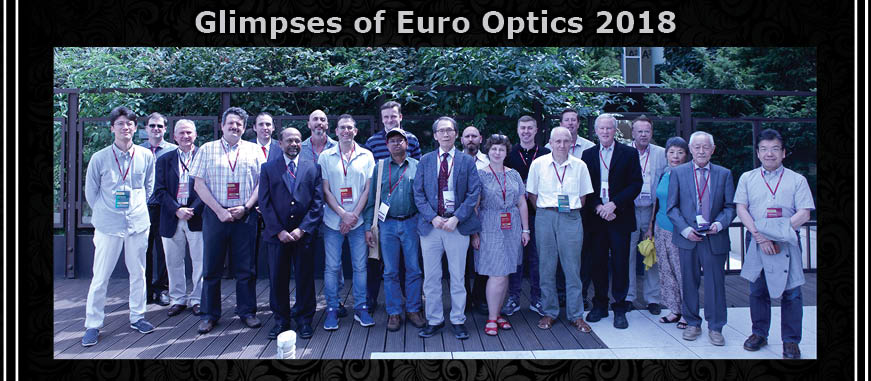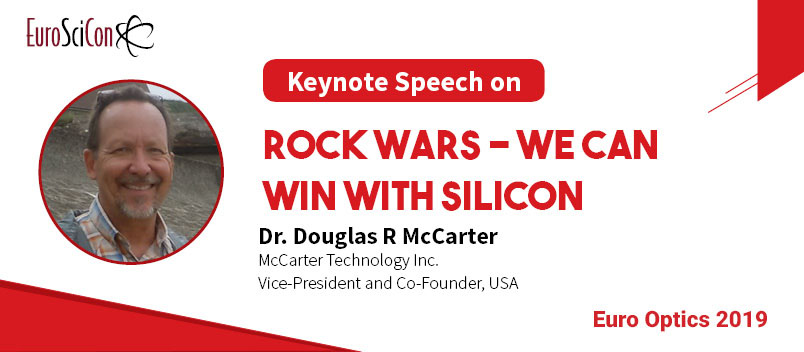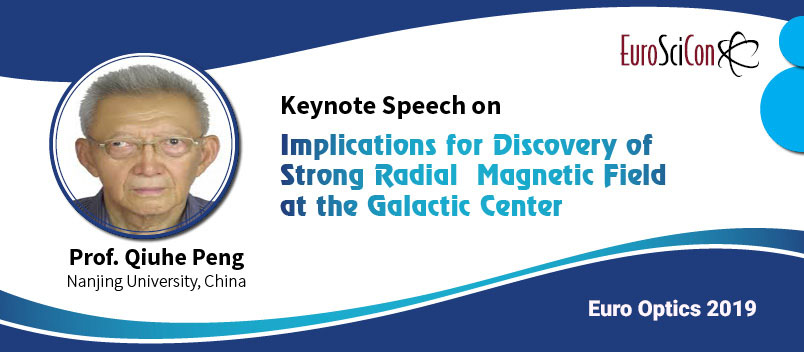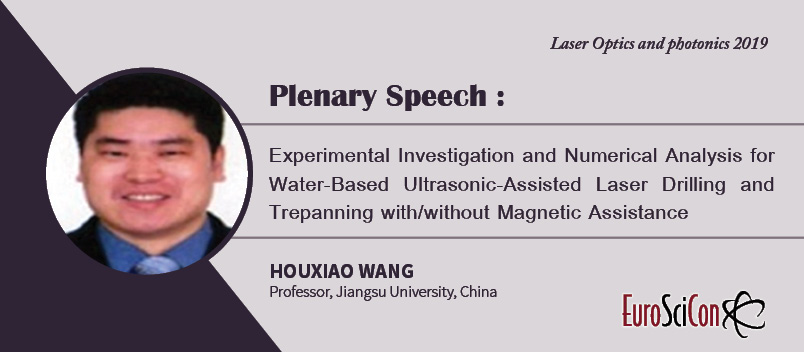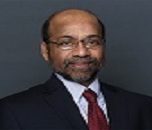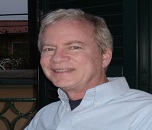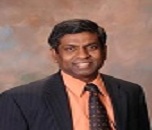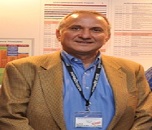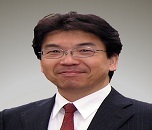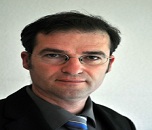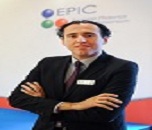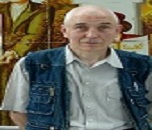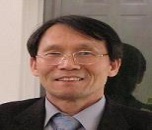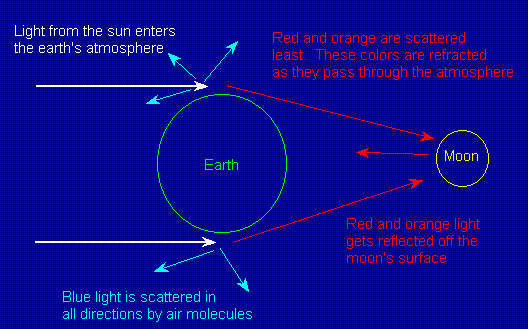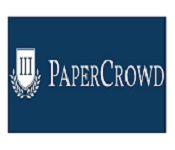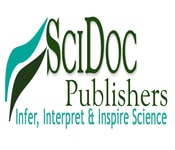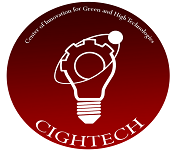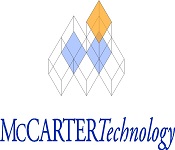Euro Optics 2019
About Conference
Conference Topics:
- Optical Communications And Networking
- Optics and Lasers in Medicine
- Optical Physics
- Optoelectronics
- Nanophotonics
- Biophotonics
- Surface Enhanced Spectroscopy (SES)
- Fiber Laser Technology
- Classical Optics
- Physical Optics
- Modern Optics
- Atmospheric Optics
- Photonic Integrated Circuits
- Photonic Systems
- Organic Photonics
- Organic Lasers
- Microwave Photonics
- Waveguide Optics
- Photonic Crystal Fiber
- Optical Medium
- Laser Diode
- Laser Safety
- Optical Interferometers
- Laser Technology
- Organic Lasers
- Optical Imaging and Sensing
- Implementation of Lasers, Optics, and Photonics
- Industrial Applications of Lasers
- Nuclear Science
- Plasma Science
Subject
The field of Lasers, Optics and Photonics have not only helped the development in different fields in science and technology but also contributed towards the improvement of the quality of human life to a great extent. All this has become possible with the different discoveries and inventions leading to the development of various applications. The core aim of Optics 2019 conference is to provide an opportunity for the delegates to meet, interact and exchange new ideas in the various fields of Lasers, Optics and Photonics
What’s New?
Euro Optics 2020 includes international attendee workshops, lectures and symposia, including a designated registration area, a refreshment break and gala lunch. Attendees can join the EuroSciCon as an international member to receive discounts on registration. So come and join leading experts and allied professionals from February 21-22, 2020 Amsterdam, Netherlands to keep up with the rapidly accelerating pace of change that is already having an impact on the field of Optics and will continue to in the future.
Who can attend?
- Eminent Scientists/Research Professors in the field of lasers, Optics & Photonics
- Junior/Senior research fellows in Lasers, Optics & Photonics, Students
- Directors of Photonics companies
- Photonics Engineers
- Members of different Lasers, Optics and Photonics associations.
Why Amsterdam, Netherlands ?
Amsterdam, the capital of Netherlands and is the most populous municipality of the country. it is one of the most vital ports of the world in the course of Dutch Golden Age. It is the commercial capital of the u . s . and also one of the pinnacle economic facilities of Europe. The essential attractions in Amsterdam are its historical canals, Van Gogh Museum, Stedelijk museum, Rijks museum, Hermitage Amsterdam, Anne Frank House. The Amsterdam Museum and its many cannabis coffee retail outlets draw greater than five million traffic yearly from all over the world. Amsterdam Stock Exchange is the oldest stock trade in the world and it is positioned in the core of the city.
Sessions and Tracks
1. Classical Optics
Traditional optics is isolated into two principle branches: geometrical (or beam) optics and physical (or wave) optics. In geometrical optics, light is considered to go in straight lines, while in physical optics, light is considered as an electromagnetic wave.
Geometrical optics can be seen as an estimate of physical optics that applies when the wavelength of the light utilized is substantially littler than the extent of the optical components in the framework being demonstrated.
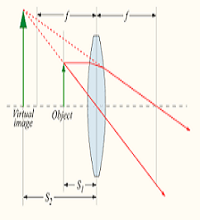
1. Reflections
2. Refractions
3. Lenses
4. Aberrations
2. Physical Optics
In physical optics, light is considered to engender as a wave. This model predicts wonders, for example, obstruction and diffraction, which are not clarified by geometric optics. The speed of light waves in air is roughly 3.0×108 m/s (precisely 299,792,458 m/s in a vacuum). The wavelength of obvious light waves differs in the vicinity of 400 and 700 nm, however, the expression "light" is additionally regularly connected to infrared (0.7– 300 μm) and bright radiation (10– 400 nm).

- Superposition and interference
- Diffraction and optical resolution
- Dispersion and scattering
- Polarization
3. Modern Optics
Present day optics incorporate the territories of optical science and designing that wound up plainly famous in the twentieth century. These territories of optical science regularly identify with the electromagnetic or quantum properties of light yet do incorporate different points. A noteworthy subfield of present-day optics, quantum optics, manages particularly quantum mechanical properties of light. Quantum optics isn't simply hypothetical; some cutting-edge gadgets, for example, lasers, have standards of operation that rely upon quantum mechanics. Light locators, for example, photomultipliers and channeltrons, react to singular photons. Electronic picture sensors, for example, CCDs, show shot commotion relating to the measurements of individual photon occasions. Light-radiating diodes and photovoltaic cells, as well, can't be comprehended without quantum mechanics. In the investigation of these gadgets, quantum optics regularly covers with quantum hardware.

1. Crystal Optics
2. Singular Optics
3. Non-Imaging Optics
4. Non-Linear Optics
4. Atmospheric Optics
The one of a kind optical properties of the climate causes an extensive variety of marvelous optical wonders. The blue shade of the sky is an immediate consequence of Rayleigh disseminating which diverts higher recurrence (blue) daylight once more into the field of the perspective of the onlooker. Since blue light is scattered more effectively than red light, the sun goes up against a rosy tint when it is seen through a thick environment, as amid a dawn or dusk. The extra particulate issue in the sky can disseminate distinctive hues at various points making beautiful gleaming skies at nightfall and first light. Dissipating off of ice precious stones and different particles in the environment are in charge of radiances, glimmers, crowns, beams of daylight, and sun pooches. The variety in these sorts of wonders is because of various molecule sizes and geometries.
1. Mirages
2. Temperature Inversion
3. Novaya Zemlya Effect
4. Fata Morgana
5. Photonic Integrated Circuits
Photonic coordinated circuits (PICs) are optically dynamic incorporated semiconductor photonic gadgets which comprise of no less than two distinctive practical squares, (pick up locale and a grinding based mirror in a laser. These gadgets are in charge of business achievements of optical correspondences and the capacity to expand the accessible data transfer capacity without critical cost increments to the end client, through enhanced execution and cost lessening that they give. The most broadly sent PICs depend on the Indium phosphide material framework. Silicon photonics is a dynamic zone of research.
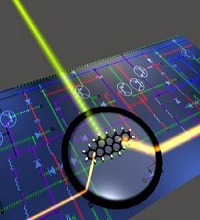

6. Photonic Systems
Photonics likewise incorporates explore on photonic frameworks. This term is frequently utilized for optical correspondence frameworks. This territory of research concentrates on the usage of photonic frameworks like rapid photonic systems. This likewise incorporates inquire about on optical regenerators, which enhance optical flag quality.
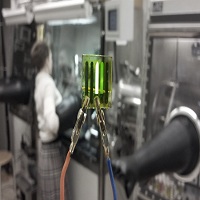
7. Organic Photonics
Natural photonics incorporates the age, discharge, transmission, adjustment, flag handling, exchanging, enhancement, and identification/detecting of light, utilizing natural optical materials. Natural inorganic nanoparticle picks up media are nanocomposites produced for strong state color lasers and can likewise be used in biosensors, bio examination and nonlinear natural photonics applications. An extra class of natural materials utilized as a part of the age of laser light incorporates natural semiconductors. Conjugated polymers are broadly utilized as optically-pumped natural semiconductors. Fields inside natural photonics incorporate the fluid natural color laser and strong state natural color lasers. Materials utilized as a part of strong state color lasers include:

8. Organic Lasers
Natural lasers utilize a natural (carbon based) material as the increased medium. The primary natural laser was the fluid color laser. These lasers utilize laser color arrangements as their pick up media. Natural lasers are innately tunable and when designed as enhanced different crystal grinding laser oscillators can yield productive single-transverse mode, and single-longitudinal-mode, discharge with laser line widths as tight as 350 MHz (roughly 0.0004 nm at a wavelength of 590 nm), in the high-control beat administration.
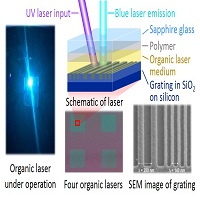
1. Solid-state dye lasers
2. Organic semiconductor laser
3. Distributed feedback laser
4. Tunable Lasers
9. Waveguide Optics
An optical waveguide is a physical structure that accomplices electromagnetic waves in the optical range. Ordinary sorts of optical waveguides entwine optical fiber and rectangular waveguides. Optical waveguides are used as parts in interlaced optical circuits or as the transmission medium in close-by and entire arrangement optical correspondence structures.
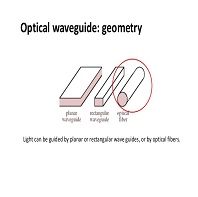
1. Dielectric slab waveguide
2. Laser-inscribed waveguides
3. Rib waveguides
4. Strip waveguides
10. Photonic Crystal Fiber
Photonic-precious stone fiber (PCF) is another class of optical fiber in light of the properties of photonic gems. In view of its capacity to keep the light in empty centers or with constrained attributes unrealistic in traditional optical fiber, PCF is presently discovering applications in fiber-optic correspondences, fiber lasers, nonlinear gadgets, high-control transmission, exceedingly touchy gas sensors, and different regions
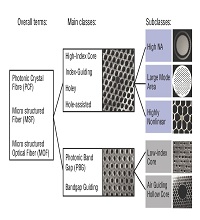
1. Photonic-Bandgap Fiber
2. Holey Fiber
3. Bragg Fiber
4. Hole-Assisted Fiber
11. Microwave Photonics
Microwave photonics is an interdisciplinary area. that studies the interaction between microwave and. optical signals, for applications such as broadband wireless. access networks, sensor networks, radar, satellite communications, instrumentation, and warfare systems. The optoelectronic systems make the transmission and processing of microwave signals, while the development of high-capacity optical communication systems has required the use of microwave techniques in optical transmitters and receivers.
- Components for Analog Systems
- Subsystems for Signal Processing
- Photonic Signal Generation for Microwave, Millimeter-Wave and Terahertz Applications
- Microwave Photonic and Radio-over-fiber Subsystems
12. Nano Photonics
Nanophotonics or Nano-optics is the investigation of the conduct of light on the nanometer scale, and of the collaboration of nanometer-scale objects with light. It is a branch of optics, optical building, electrical designing, and nanotechnology. It regularly (yet not only) includes metallic segments, which can transport and concentrate light by means of surface plasmon polaritons. The expression "nano-optics", simply like the expression "optics", more often than not concerns bright, noticeable, and close infrared light (free-space wavelength around 300-1200 nanometers).
13. Biophotonics
The term biophotonics connotes a mix of science and photonics, with photonics being the science and development of age, control, and area of photons, quantum units of light. Photonics is related to devices and photons. Photons accept a central part in information headways, for instance, fiber optics the way electrons do in devices. Biophotonics can in like manner be delineated as the "change and use of optical techniques, particularly imaging, to the examination of natural iotas, cells, and tissue". One of the essential points of interest in using optical techniques which make up biophotonics is that they spare the genuineness of the natural cells being reviewed. Biophotonics has thusly transform into the set up general term for all techniques that course of action with the joint effort between natural things and photons. This implies surge, area, maintenance, reflection, change, and the making of radiation from biomolecular, cells, tissues, living creatures and biomaterials. Domains of utilization are life science, pharmaceutical, agribusiness, and normal science. Like the partition among "electric" and "contraptions", a qualification can be made between applications, which use light generally to trade essentialness by methods for light (like Therapy or restorative technique) and applications which invigorate matter through light and trade information back to the head (like diagnostics). Overall the term biophotonics is simply insinuated the second case.
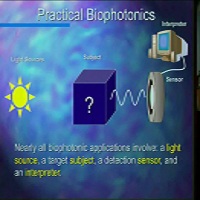
- Photonic Therapeutics and Diagnostics
- Neurophotonics, Neurosurgery and Optogenetics
- Clinical Technologies and Systems
- Nano-Biophotonics
14. Laser Technology
In the course of the most recent years, the laser has set up its situation as the general device to an ever increasing extent; e.g. lasers are utilized as a part of the fields of materials preparing, prescription, correspondence and estimating innovation. As cross-segment innovation and advancement, driver laser innovation serves photonics, as well as different businesses.
Showing this extensive variety of utilization in industry and research, Laser Technology is one the most vital movement fields of the Photonics Cluster Berlin-Brandenburg. The way to the achievement of the district is the solid research condition with its nearby associations with neighborhood industry. Along these lines, amid the most recent years, in the capital area, an assortment of system structures has been set up, giving organizations and research establishments access to assets, as learning and capital, at both nearby and universal level. Also, organizations regularly are advertising pioneers in specialty regions, which is an extra quality of the mechanical Berlin-Brandenburg.

15. Laser Diode
A laser diode, (LD), implantation laser diode (ILD), or diode laser is a semiconductor contraption commensurate to a light-radiating diode already, which the laser bar might be irritated toward the diode's convergence. Laser diodes require help those for all intents and purposes typical sort lasers made, for an absolutely enlarge about livelihoods that wire fiber optic correspondences, organized label perusers, laser pointers, CD/DVD/Blu-beam plate perusing/recording, laser printing, laser checking and light bar lighting up. and light bar brightening.
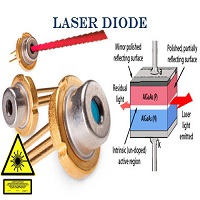
- Double heterostructure lasersQuantum well lasers
- Quantum cascade lasers
- Interband cascade lasers
- Separate confinement heterostructure lasers
- Distributed Bragg Reflector lasers
- Distributed feedback lasers
- Vertical-cavity surface-emitting laser
16. Laser Safety
Laser security is the safe arrangement, use and use of lasers to play down the shot of laser incidents, especially those including eye wounds. Since to be sure tolerably little wholes of laser light can prompt enduring eye wounds, the arrangement and usage of lasers is frequently subject to government controls. Direct and high-control lasers are perhaps perilous since they can consume the retina of the eye, or to be sure the skin. To control the peril of harm, distinctive conclusions, for representation 21 Code of Government Controls (CFR) Portion 1040 in the US and IEC 60825 universally, portray "classes" of laser relying upon their control and wavelength. These headings drive upon makers required safety efforts, for example, naming lasers with specific notification, and wearing laser security goggles when working lasers. Assertion benchmarks, for example, American National Measures Established (ANSI) Z136, give customers with control measures for laser threats, and additionally extraordinary tables pleasing in.
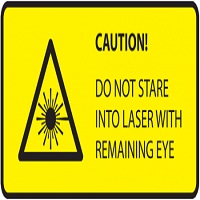

17. Optical Interferometers
Optical interferometric are disobedient that depend on impedances of two or more superimposed reflections of the input laser bar. These are one of the most common optical devices, that are utilized for accuracy estimations, surface diagnostics, astronomy, seismology, quantum data, etc. There are numerous arrangements of optical interferometric, and in this lab, you will get to be commonplace with two likely most common sorts.
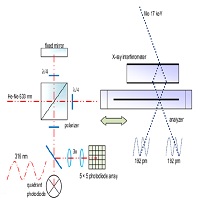
18. Optics & Lasers in Medicine
There are some careful activities that are baffling to perform with the ordinary surgical tool. Starting tribulations with laser shaft demonstrated that a finely engaged pillar from a carbon dioxide gas laser could slice through human tissue easily and systematic. The specialist could coordinate the shaft from an edge by using a mirror appended on a portable metal arm. Therefore, now daily's laser bar is the most attractive actualize which is used as a backup for the traditional sharp edge to perform difficult medical procedures. Lasers were considered as most solid in working on segments that are effortless to achieve zones on the body's outside, including the sound-related perceivers, skin, mouth, visual perceivers and nasal discerner. In any case, as of late medicos have set up the exceptional advance in developing laser methods for use in interior investigation and medical procedure. For delineation, lasers are bitten by bit used to emaculate plaque from individuals' courses.

19. Optical Physics
Optical material science is an investigation of atomics and particles. It is the investigation of electromagnetic radiation, the collaboration and the properties of that radiation, with the issue, particularly its control and control. It contrasts from general optics and optical building, anyway among optical material science, connected optics, and optical designing, the utilization of connected optics and the contraptions of optical designing are required for simple research in optical material science, and that examination takes to the improvement of early creations and applications. Significant investigation in optical material science is withal quick to quantum optics and intelligibility. In optical material science, examine is also empowered in territories, for example, ultra-short electromagnetic fields, the nonlinear replication of secluded iotas to horrifying, quantum properties of the electromagnetic field, and the particle-hole connection at high fields.
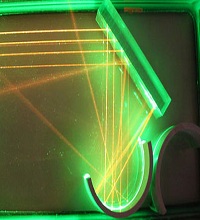
20. Optical Communications & Networking
Optical correspondences systems are upgrading an indispensable part, for example, there is an appeal for limit joins. DWDM which assigns thick wavelength division multiplexing is generally sent at the center systems to appropriate high limit pass on frameworks. Optical parts, for example, tunable channels, end inventions, optical intensifiers handsets, and incorporate drop multiplexers are winding up more reliable and moderate. Access system and metropolitan territory systems are progressively worked with optical advances to surmount the electronic blockage at arranging edges. Subsystems and beginning segments for rapid optical systems offer a nascent outline choice. Free-space optical correspondence has been organized in space, while earthly structures are normally restrained by climate, geology and the accessibility of light.
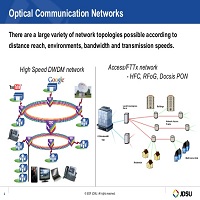
- Erbium-Doped Optical Amplifier
- Wavelength-Division Multiplexing (WDM)
- Coaxial Cable
- Optical Splitter
21. Fiber Laser Technology
Fiber lasers are basically not quite the same as another laser composes; in a fiber laser the dynamic medium that induces the laser shaft is really disengaged inside the fiber optic itself. This separates them from fiber-disseminated lasers where the shaft is simply passed on from the laser resonator to the bar appropriation optics. Fiber lasers are presently noticeable due to its most focusable or most astounding luster of any laser compose. The basically versatile idea of fiber lasers has been utilized to scale multimode fiber lasers up to the yield control more dominant than 50 kW and single-mode fiber lasers equipped for 10kW in puissance. Optical imaging is an imaging method that usually portrays the comportment of noticeable, bright, and infrared light used in imaging. Since light is an electromagnetic wave, related signs happen in X-beams, microwaves, radio waves.
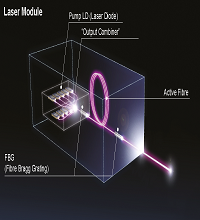
22. Surface Enhanced Spectroscopy (SES)
Surface-improved Raman disseminating (SERS) or Surface-upgraded Raman spectroscopy is a surface delicate procedure which improves Raman dissipating by the atoms adsorbed on the unpleasant metal surfaces or by the nanostructures, for example, plasmonic attractive silica nanotubes and the upgrade factor can be as much as 1010 to 1011, which implies the system may distinguish single particles. The instrument of upgrade impact of SERS involves banter in the writing. There are two essential speculations and their components contrast significantly, recognizing them tentatively has not been candid. The electromagnetic hypothesis suggests the excitation of limited surface plasmons, and after that the synthetic hypothesis prescribes the arrangement of charge exchange buildings. The compound hypothesis applies just for the species that have shaped a concoction bond with surface. So it can't clarify the watched flag improvement in every one of the cases, while electromagnetic hypothesis can put on even in those situations where the example is physisorbed just to the surface. It has been indicated of late that SERS improvement can happen notwithstanding when energized particle is moderately far separated from the surface which swarms metallic nanoparticles empowering surface plasmon marvels.
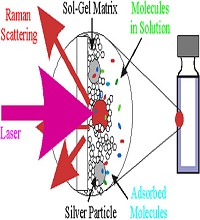
- Surface-Enhanced Raman Scattering
- Surface-Enhanced Infrared Absorption
- Surface Enhanced Hyper Raman Scattering
- Single Molecule Detection spectroscopy
- Surface Enhanced Surface Harmonic Generation
- Tip-Enhanced Raman spectroscopy
- Strong Light-Molecule, Matter Interaction
- Surface Enhanced Optical Processes on Nanostructures
- Other Surface Enhanced Optical processes
23. Optical Imaging and Sensing
Optical imaging is a system to find in a non-ambushing way inside the body, corresponding to what is finished with x-bar shafts. In any case, not the slightest bit like x-shafts, which use ionizing radiation, has optical imaging used unmistakable light and the uncommon properties of photons to get down and out pictures of organs and tissues and in addition more minute structures including cells and even particles. These photos are used by aces for approach about and by clinicians for infection affirmation and treatment. An optical sensor is an instrument that fans light bars into electronic signs. Like a photo resistor, it checks the physical measure of light and effects a translation of it into an edge to analyze by the instrument. Generally, the optical sensor is to some degree a more unmistakable structure acclimatizing a surveying contraption, a wellspring of light and the sensor itself. This is generally connected with an electrical trigger, which reacts to an adjustment in the flag inside the optical sensor.

24. Implementation of Lasers, Optics and Photonics
There are various applications for laser, optics and photonics other than pharmaceutical. Interchange fields where the laser, optics and photonics are used are endeavors, assurance, and sensible researchers. The progression in this part prompts the change of human life. This also impacts the money related improvement of the country. A bit of the application are ultrafast laser pumping, biophotonics investigates, toughening, LED laser lift-off, compound acknowledgment and LIDAR.
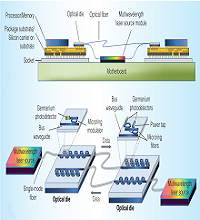
25. Industrial Applications of Laser
Mechanical Laser System is a wellspring of vitality gave additional standard properties. These extraordinary properties have been point by point in the prior zone on "Properties of Laser". By virtue of its novel nature, lasers have discovered applications in every way that really matters in each field of human exercises, paying little regard to whether it is science, steady, industry, agribusiness, beguilement or informatics, to demonstrate a couple. In this segment, Industrial Laser System has been talked about quickly. Today, Industrial Laser System is clearly the most adaptable instrument accessible for different material preparing applications like welding, debilitating, cutting, warm treatment (solidifying, strengthening, covering, cladding and so forth.) and certain particularly extraordinary applications like slack of interstellar pieces, Laser changing, withdrew refinement and decommissioning of parts of unexploited atomic establishments, laser departure, oil and gas examination, car industry and so on.

26. Plasma Science
Plasma is one of the four fundamental states of the issue, and was first delineated by researcher Irving Langmuir in the 1920s dissimilar to the next three states, solid, liquid, and gas, plasma does not exist uninhibitedly on the Earth's surface under common conditions. Plasma must be dishonestly made by warming or subjecting a fair gas to a strong electromagnetic field to the point an ionized vaporous substance ends up being logically electrically conductive, and long-ago electromagnetic fields summon the leaders of the issue. Plasma and ionized gases have exceptional properties and show hones not at all like those of interchange states, and the change between them is generally a matter of phrasing and subject to illustration. In light of the incorporating biological temperature and thickness, to some degree ionized or totally ionized sorts of plasma may be made. Neon signs or lightning storms are instances of generally ionized plasma, while within the Sun is an instance of totally ionized plasma, close by the sun-fueled corona] and stars.
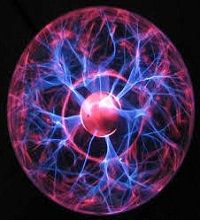
27. Nuclear Science
Nuclear material science is the field of material science that surveys atomic centers and their constituents and joint efforts. Diverse sorts of nuclear matter are furthermore considered. Atomic material science should not be confused for atomic material science, which contemplates the particle by and large, including its electrons. Disclosures in nuclear material science have provoked applications in various fields. This fuses nuclear power, nuclear weapons, nuclear medication and appealing resonation imaging, mechanical and agricultural isotopes, molecule implantation in materials building, and radiocarbon dating in geography and fossil science. Such applications are considered in the field of nuclear building. Particle material science created out of nuclear material science and the two fields are typically instructed in close association. Nuclear cosmology, the usage of nuclear material science to stargazing, is basic in elucidating the inward workings of stars and the reason for the manufactured parts.
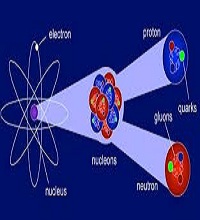
28. Optoelectronics
Optoelectronics is the field of innovation that connects the material science of light with power. It joins the plan, study and produce of equipment inventions that change over electrical signs into photon signs and photons signs to electrical signs. Any creation that works as an electrical-to-optical or optical-to-electrical is viewed as an optoelectronic contraption. Optoelectronics is developed on the quantum mechanical impacts of light on electronic materials, here and there within the sight of electric fields, particularly semiconductors. Optoelectronic innovations involve laser frameworks, remote detecting frameworks, fiber optic correspondences, optical data frameworks, and electric visual perceivers restorative symptomatic frameworks.

Learn More
Recommended EuroSciCon conferences
CNS 2018, Oct 22-23, 2018 Greece | Vaccines & Vaccination, Oct 26-27, 2018 Hungary | Oncology 2018, Nov 05-06 , 2018 France | Liver & Pancreatic Diseases, Nov 12-13, 2018 France | Hepatology & Hepatitis , Nov 12-13, 2018 France | Orthopedics, Nov 29-30, 2018 Netherlands | Nursing & Healthcare, Dec 03-04, 2018 Netherlands | Dementia, Dec 06-07, 2018 Netherlands | Chemistry Research, Dec 06-07, 2018 Netherlands | Clinical pathology , Feb 27-28, 2019 Czech Republic | Euro Gastro 2019, March 11-12, 2019 Netherlands | Dental & Dental Hygiene, March 25-26, 2019 Hungary | Data Analytics , April 08-09, 2019 France | Dermatology 2018, April 18-19, 2019 France | Microbiology and Virology, April 22-23, 2019 Greece | Infectious Diseases & Std-Aids 2019 April 15-16, 2019 France | Quantum & Plasma physics , May 09-10, 2019 Sweden | Advance Nursing Practice, May 23-24, 2019 Sweden | Psychiatry & Psychology , April 11-12, 2019 France | Renewable and Green Energy, March 21-22, 2019 Netherlands| Nano 2019, Oct 07-09, 2019, Japan | Advanced Energy Materials, Oct 07-09, 2019 Japan | Materials Science & Engineering, June 04-06, 2019 France | Nursing Diagnosis, July 25-26, 2019 Luxembourg |Nursing & Midwifery, May 23-24, 2019 Sweden | Nuclear Medicine & Radiation Therapy, June 10-12, 2019 Netherlands
Top Optics and Photonics Universities Worldwide:
Europe Universities:
University of Bristol| King's College London| University of Stirling| Robert Gordon University| Cardiff University| University of Essex | University of the Arts London | University College London | University of Kent | The University of Warwick | The University of Manchester | Swansea University | Alliance Manchester Business School | Lancaster University | The University of Edinburgh | University of Cambridge | University of Oxford | University of Glasgow | Newcastle University | University of Liverpool | Loughborough University | University of Leicester | University of Surrey | University of Strathclyde | Aston University | Coventry University | University off Portsmouth | University of Hull | Northumbria University At Newcastle | University of Huddersfield | University of Central Lancashire| Leeds Beckett University | London Southbank University | University of Birmingham | University of Leeds | University of Southampton | Queen Mary University of London | University of Aberdeen | The University of Exeter | University of Bath | University of Sussex | University of Dundee | Bangor University | Keele University | University of Bradford | Plymouth University | University of Hertfordshire | University of Salford | University of Bedfordshire
USA Universities:
George Washington University | University at Buffalo Suny | Hofstra University | Stanford University | Harvard University | California University | University of Chicago | Yale University | University of Pennsylvania | University of Michigan | University of Wisconsin-Madison | Boston University | The Ohio State University | University of South Florida | University of Central Florida | Johns Hopkins University | Northwestern University | Carnegie Mellon University | Brown University | University of Texas | Georgia Institute of Technology | University of North Carolina | Rice University | Pennsylvania State University | Washington University | University of Maryland| University of Pittsburgh | Emory University | University of Minnesota | University of Florida | University of Colorado Boulder | University of Rochester | Texas A&M University | University of Illinois | Arizona State University | Vanderbilt University | Case Western Reserve University | University of Notre Dame | Georgetown University | The University of Arizona | Tufts University | University of Massachusetts Amherst | University of Miami | North Carolina State University | Rutgers University | Indiana University | The Katz School At Yeshiva University | University of Hawaii | Northeastern University | University of Kansas | University of Utah | University of lowa | University of Connecticut | University of Delaware | Wake Forest University
Asian Universities:
Tsinghua University | Fudan University | Shanghai Jiao Tong University | Zhejiang University | Nanjing University | Huazhong University | University of Shanghai For Science and Technology | Shenzhen University | Ural Federa University | Edity Cowan University | University of Tasmania | University of Wollongong | The University of Western Australia | National University of Singapore | The University of Sydney | Novosibirsk State University | The Australian National University | Monash University | The University of Newcastle | Tomsk State University | Russian State Social University | Bond University | Deakin University | Griffith University | Korea University | Victoria University | Waseda University | University of South Australia | Curtin University | Singapore Management University | Seoul National University | The University of Adelaide | Murdoch University | University of Canberra | Western Sydney University | Lobachevsky University | University of Santo Tomas | Volgograd State University | SRM University | Effat University | Siberian Federal University | The University of Tokyo | Kyoto University | University of Bern | University of Basel | Charles University | Keio University | University of Tsukuba | University of Tartu | Kobe University | Sogang University | University of Delhi | Okayama University | Doshisha University | University of Calcutta
African Universities:
University of Port Elizabeth | Pan Africa Christian University | Midrand Graduate Institute | University Of Johannesburg | University Of South Wales Online Programmes through UNICAF | UNICAF University | Middlesex University Mauritius | University of the Western Cape | Rhodes University | Stellenbosch University | University of Kwazulu Natal
Optics Societies:
Optical Society of America (OSA) New England Fiberoptic Council (NEFC)| SPIE, the International Society for Optics and Photonics| Ontario Centre of Excellence for Photonics| Laser Institute of America (LIA)| The Regional Center for Next Generation Manufacturing| Indian Laser Association Optical Society of India| IEEE Lasers & Electro-Optics Society| American Society for Laser Medicine and Surgery New Mexico Optics Industry Association Taiwan Optics/Optronics Manufacturers' Association │Florida Photonics Cluster| Photonics Association (Singapore)| Photonics Industry & Technology Development Association| Australian Optical Society (AOS)| Danish Optical Society| Italian Physical Society (SIF)| Finnish Optical Society (FOS)| French Physical Society (SFP)
Optic Companies:
Edmund Optics- Optics- Imaging- Photonics- Optomechanics – Lasers| ZEISS United States of America, optical and optoelectronic technology| Meller Optics| Lasit, Franklin, MA| Messer Cutting Systems, Menomonee FallsWI| Synrad, Mukilteo, WA| AMTEC - Applied Manufacturing Technologies Inc, Anaheim, CA| Directed Light Inc, San Jose, CA| EBlink| Polatis| Oxsensis| KDPOF| Ceravision| A.R.W. Optical Corporation| Cambrios Technologies Corp| Arroyo Instruments LLC| Electro-Optics Technology Inc| ESCO OPTICS| Infinity Photo-Optical Company | Vogelin Optical Company
Optics and Photonic Conferences:
International conferences on Photonics, Optoelectronics and Display Devices, September 19-20, 2018, Philadelphia, USA; 4th International Conference on Materials Physics, August 16-17, 2018, London, UK; 5th International Conference on Applied Physics, July 02-03, 2018, Vienna, Austria; International Conference on Molecular Physics, October 15-16, 2018, Ottawa, Canada; 4th International Conference on Astrophysics Physics, December 03-05, 2018, Chicago, Illinois, USA; OSA Bio photonics Congress: Biomedical Optics, 3-6 April 2018, Hollywood, FL, United States; SPIE Photonics West 2018, 27 January - 01 February 2018, San Francisco, United States; SPIE Medical Imaging, 10-15 February, 2018, Houston, Texas, United States; SPIE Photoptics Europe, 22-26 April 2018, Strasbourg, France; SPIE Optical SystemsDesigns, 14-17 May 2018, Frankfurt, Germany; Physical Society of Hong Kong(PSHK); United Physical Society of Russian Federation (UPS RF); Australian Optical Society (AOS); Danish Optical Society; Italian Physical Society (SIF); Italian Physical Society (SIF).
Journal of Optics
Applied Optics| Optical Materials| Journal of the Optical Society of America| Optics Express| Optics Letters| Journal of Biomedical Optics| Optics Communications| Biomedical Optics Express| Laser & Photonics Reviews| Advanced Optical Materials| Optik| Journal of the Optical Society of America A| Journal of Modern Optics| Optical Fiber Technology| Journal of Lightwave Technology| Chinese Optics Letters | Nature Photonics | Journal of Nonlinear Optical Physics & Materials| IEEE Journal of Quantum Electronics| IEEE Journal of Selected Topics in Quantum Electronics| Quantum Electronics| Optical Engineering| Applied Physics B| ACS Photonics| Optics and Spectroscopy| Journal of the European Optical Society Rapid Publications| Optica| Optical Review| Physical Review A| Ukrainian Journal of Physics
Past Conference Report
Euro Optics 2018
Euro Optics 2019: Past Conference Report
The European Conference on Lasers, Optics and Photonics organized by Euroscicon was held in Prague, Czech Republic, during July 16-17, 2018. Active involvement and generous comeback were received from the Organizing Committee Members, Editorial Board Members of Euroscicon journals as well as from prominent Scientists, Researchers and Young Student community. Researchers and students who disclosed up from different parts of the globe have made the conference one of the most effective and prolific events in 2018. The conference was noticeable with the presence of renowned scientists, talented young researchers, students and business delegates motivating the two days event into the path of success with thought provoking keynote and plenary presentations highlighting the theme “Demonstrating the fame of Lasers, Optics and Photonics in current world”
The meeting was carried out through various sessions, in which the discussions were held on the following major scientific tracks
· Optical Communications and Networking
· Optics and Lasers in Medicine
· Nanophotonics And Biophotonics
· Surface Enhanced Spectroscopy (SES)
· Photonic Integrated Circuits
The highlights of the meeting were the informative Keynote lectures from:
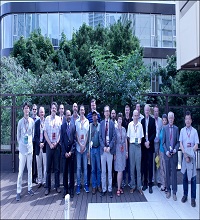
Title: Terahertz light emission and lasing in graphene under current-injection pumping
Taiichi Otsuji, Tohoku University, Japan
Title: Pulsar identification of background spectra of LIGO data
Yukio Tomozawa,University of Michigan, USA
Title: LIDAR data analysis for automatic region segmentation and object classification
Vijayan Asari, University of Dayton, USA
Title:Sol-gel Materials for Optical Applications
David Levy, Instituto de Ciencia de Materiales de Madrid, Spain
Title: Technology Trends of The European Industry In Lasers And Optics
Jose Pozo, EPIC – European Photonics Industry Consortium, Netherlands
Title: High resolution X-Ray spectroscopy and atomic physics of high energy density plasmas using transmission-crystal spectrometers in the 6-100 keV energy range
John Seely, National Institute of Standards and Technology,USA
Title: Coupling of two oscillations of close frequencies in a high pressure plasma enclosed in a spherical bulb
Gilles Courret, University of Applied Sciences and Arts Western, Switzerland
Title: Antimonide quantum materials for laser applications
Qian-Dong Zhuang , Lancaster University, UK
Title: A new spectroscopy based upon 3D photonic quantum ring lasers for non-invasive and portable brain heart disease diagnostic techniques
O'Dae Kwon, Pohang University of Science And Technology (POSTECH), South Korea
Title: Self-assembled organic/polymeric micro lasers and photo switchable arrays
Yohei Yamamoto, University of Tsukuba, Japan
Title: Iterative method of dual-wavelength laser ratio for particle spectrum
Cao Nianwen, Nanjing University of Information Science & Technology, China
Title: Optimized Synthesis And Assessment of Fluorescent Dye-Labelled Nanosystems
Katel Herve-Aubert, University of Tours, France
Title: Analytical commutation of electrical equalizer in on-off-keying optical communication systems
Gilad Katz, Holon Institute of Technology, Israel
Title: Growth and characterization of epitaxially grown GaN layer on patterned sapphire substrate
Ismail Altuntas, Cumhuriyet University, Turkey
Title: The role of growth temperature, V/III ratio and CBr4 flow on carbon doped p-GaAs epilayers
Alev Kizilbulut, Cumhuriyet University, Turkey
Title:Laser-assisted precipitation of metal and semiconductor nanoparticles in oxide glass
Maxim Vetchinnikov, Mendeleev University of Chemical Technology, Russia
Title: Ultrafast laser-induced inscription of nanogratings in alkali silicate glasses.
Sergey Fedotov, Mendeleev University of Chemical Technology, Russia
Title:Advances in the development of compact laser sources for imaging, diagnostics and treatment in biomedicine
Edik U. Rafailov, Aston University, U.K
Title:Surface-enhanced optical processes and a strong quadrupole light-molecule, matter interaction
Aleksey Mikhailovich Polubotko, A. F. Ioffe Physico-Technical Institute, Russia
Title: Advances in CAOS Camera Imaging
Nabeel Riza, University College Cork, Ireland
Title:RGB wavelength demultiplexer based on photonic crystal fiber
Dror Malka, MostlyTek LTD, Israel
Title:Ray tracing propagation of lasers in a continuous turbulent atmosphere
Itay Naeh, Rafael Advanced Defense Systems LTD, Israel
Title: Nano scales tilt measurement using a cyclic interferometer: new developments
Charles Joenathan, Rose-Hulman Institute of Technology, USA
Title:Physicochemical, spectral-luminescent and lasing properties of Yb-containing huntite-like glass
Georgii Malashkevich, B.I. Stepanov Institute of Physics, Belarus
Title: Modeling of fast discharges in high-pressure gases
George V. Naidis, Joint Institute for High Temperatures RAS, Russia
Title:Input Of Raman, SERS And Fluorescence Spectroscopy To Nanomedicine Research
Igor Chourpa, University of Tours, France
Title:Overcooled gas flow assisted quantum computing
Konstantin Lyakhov, Institute for Nuclear Science and Technology, South Korea
Title: A single electrode plasma discharge tube device
Shouguo Wang, Qilu University of Technology, China
Title: Pulsed MOVPE growth of high quality AlGaN epilayers for ultraviolet LED applications
Ilkay Demir, Cumhuriyet University, Turkey
Title: Optimization Of Entangled Photon Pair Sources
Kadir Durak, Ozyegin University, Turkey
Title: A density functional method for quantum confinement in atomic systems
Amlan K. Roy Indian Institute of Science Education and Research, India
Title: Evaluation of the residual stresses in wear protection coatings using X-Ray diffraction, ultrasonic and finite element technique
Adel K. Mahmoud, University of Diyala, Iraq
Title: Fluorescent and T1 MRI active multilayer nanoparticle for imaging and targeting cellular delivery
Oara Neumann, Rice University, United States
Title: Cosmic dark matter fractal field theory
T Fulton Johns, University of Tennessee Health Sciences, USA
The Honourable Guests, Keynote Speakers, well-known researchers and delegates shared their innovative research and vast experience through their fabulous presentations at the podium of Euro optics 2018 Conference. We are glad to inform that all accepted abstracts for the conference have been indexed in EuroScicon Journal of Nutrition & Food Sciences as a distinct issue.
We are also obliged to numerous delegates, company representatives and other renowned personalities who supported the conference by their active discussion forums. We are thankful to the Organizing Committee Members for their gracious presence, continuous support and assistance towards the fulfilment of Euro optics 2019.
Let us meet again @ https://optics.euroscicon.com/2019

